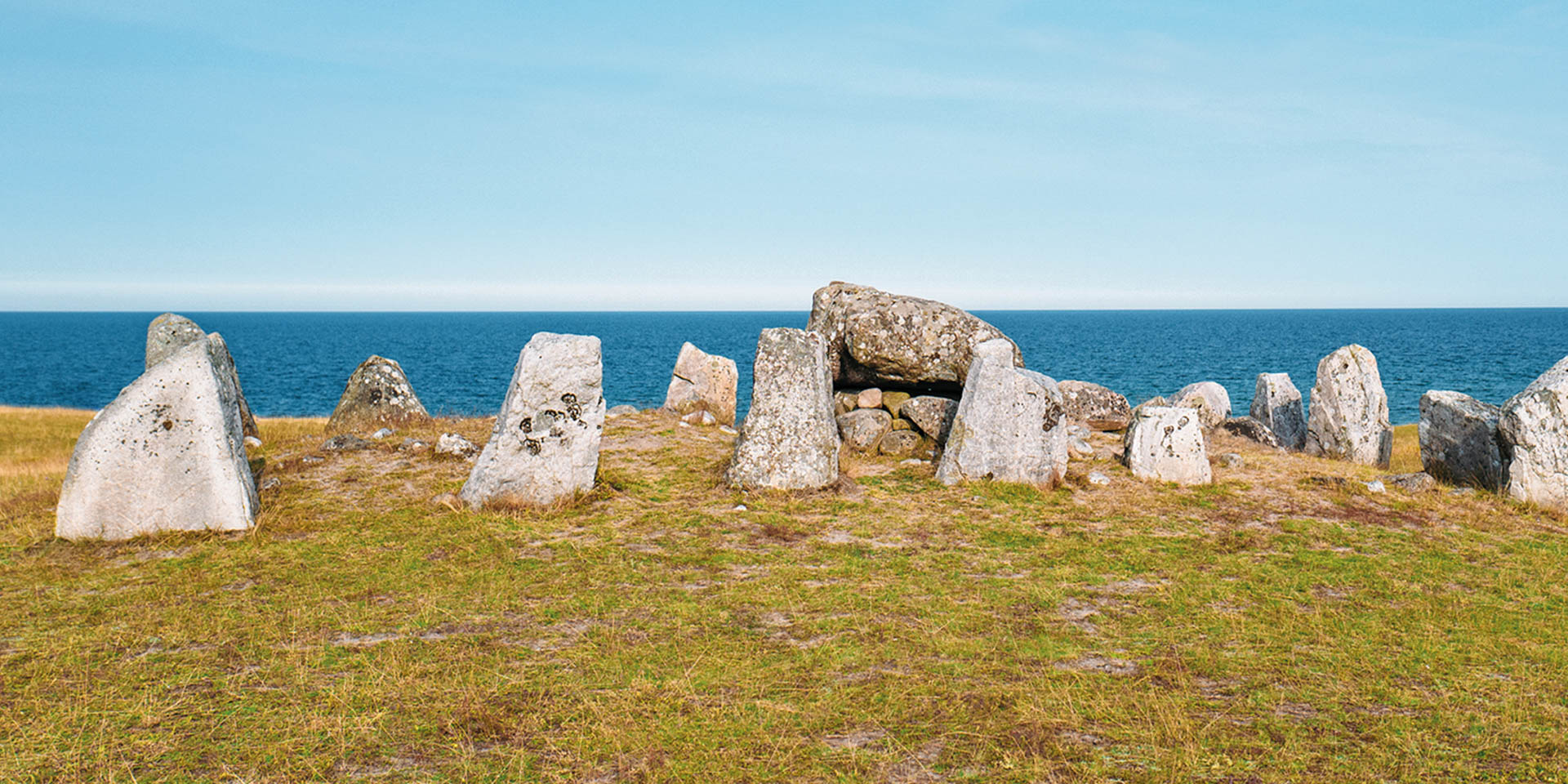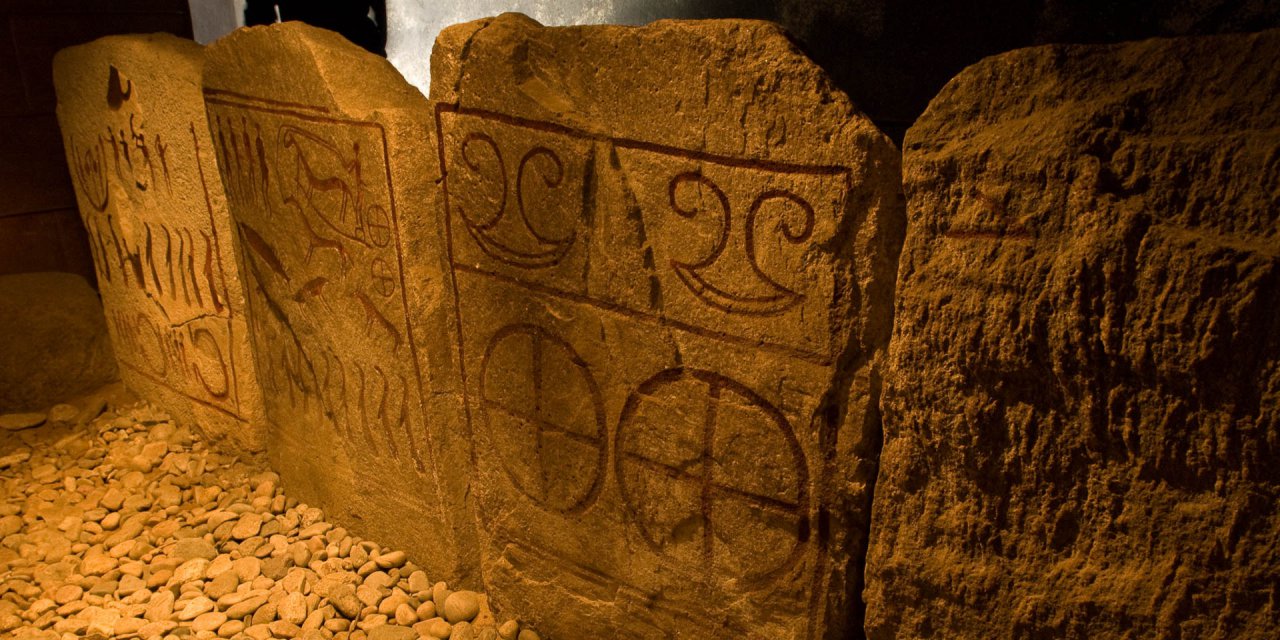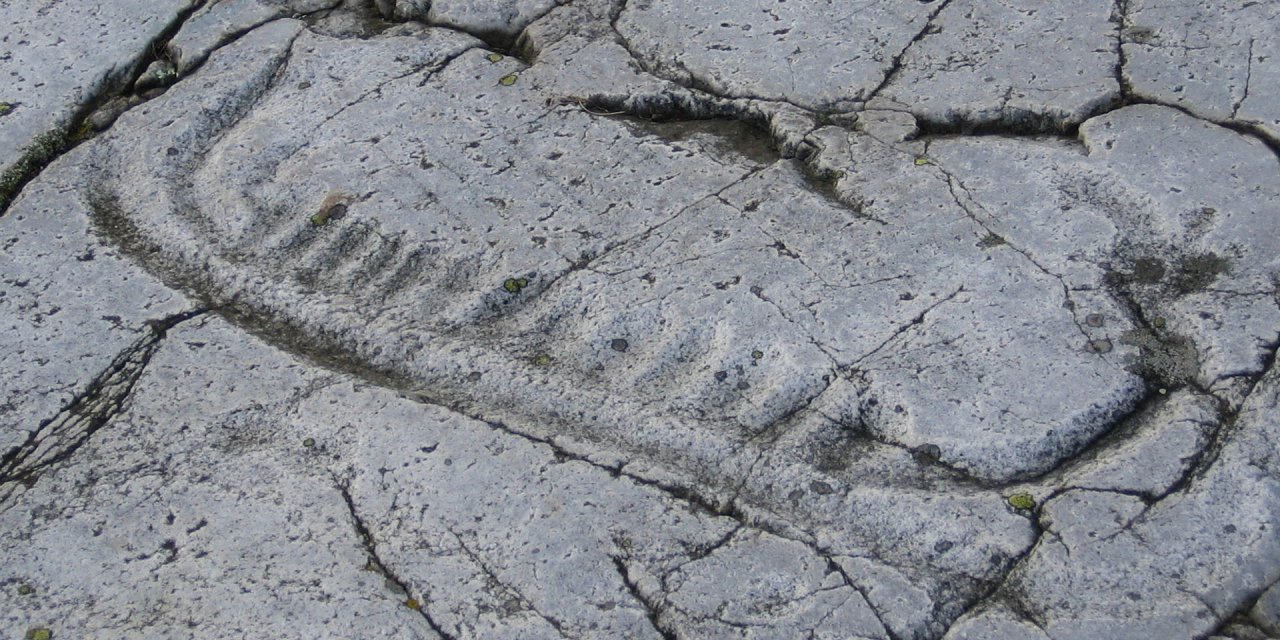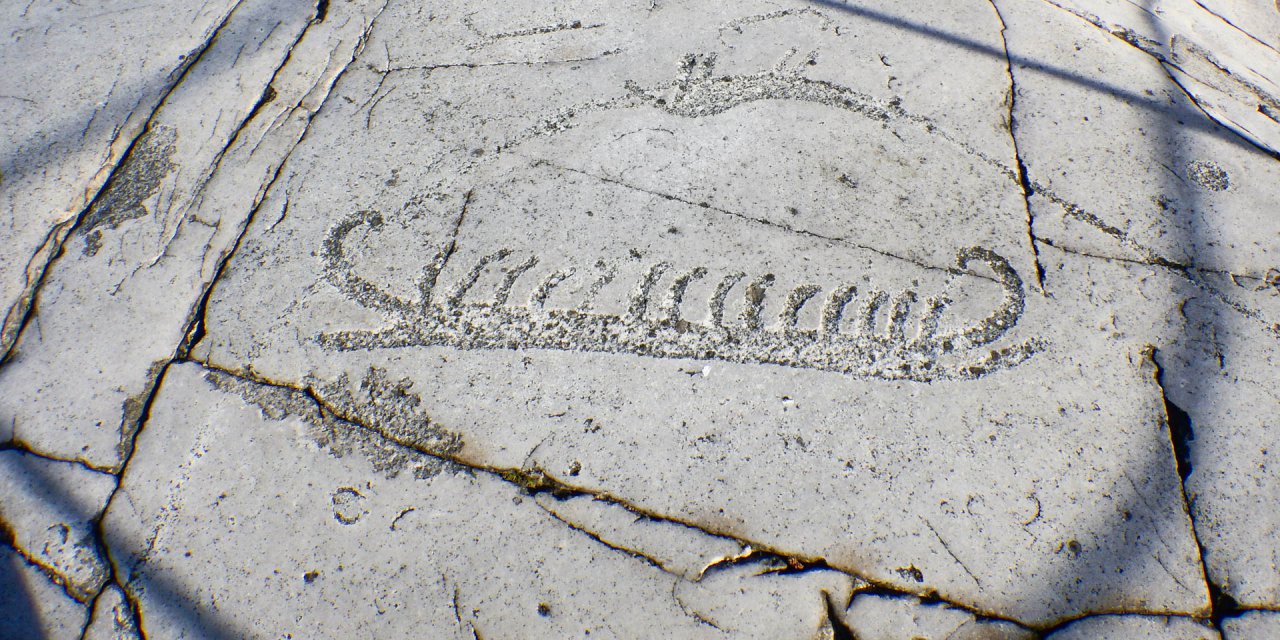

Havängsdösen
Megalithic tomb near Vitemölla
The megalithic tomb Havängsdösen is located about three kilometers north of the small fishing village Vitemölla in the far north of the municipality of Simrishamn and is one of the most famous megalithic tombs in Sweden.
The tomb Havängsdösen, dating back to the Neolithic Age, is located in the immediate vicinity of the coast in Haväng, a popular excursion destination for locals and tourists alike because of its special steppe landscape and the kilometre-long sandy beach.
Havängsdösen is a so-called dolmen (Dös), the oldest form of megalithic monuments in Scandinavia, consisting of large stone blocks. They typically consist of at least three supporting stones, which carry a large rock protruding laterally over the supporting stones as a capstone, giving the structures the appearance of a large table.
The archaeologists estimate the age of Havängsdösen to be about 5,500 years and assign the monument to the so-called Funnelbeaker culture, the first peasant culture of the Neolithic Age (4,200 – 2,800 B.C.) in Northern Europe. For many centuries, the prehistoric structure lay buried under sand and we owe its discovery to a strong autumn storm that exposed the tomb in 1843.
The structure of Havängsdösen
In the centre of the Havängsdösen is the dolmen consisting of five supporting stones and a single large capstone. Carrying stones and capstone form a chamber closed on three sides, the opening of which is directed towards the sea, in the direction of sunrise. Inside, the chamber is 2.70 meters long, 70 centimeters wide and 60 centimeters high.
The supporting stones are 0.70 to 1.90 metres wide and between 20 and 30 centimetres thick – the capstone is 2.50 metres long, 1.60 metres wide and 20 to 80 centimetres thick. The entire dolmen is framed by a stone setting of 16 vertically erected stone blocks set in a rectangle of 11x5 meters.
In 1869, the archaeologists found parts of a human skeleton and the remains of a flint axe in the chamber of Havängsdösen. As none of the usual grave offerings apart from the stone axe were found, it is assumed that the tomb was looted by grave robbers at some point, although it had been hidden under the sand for so long.



